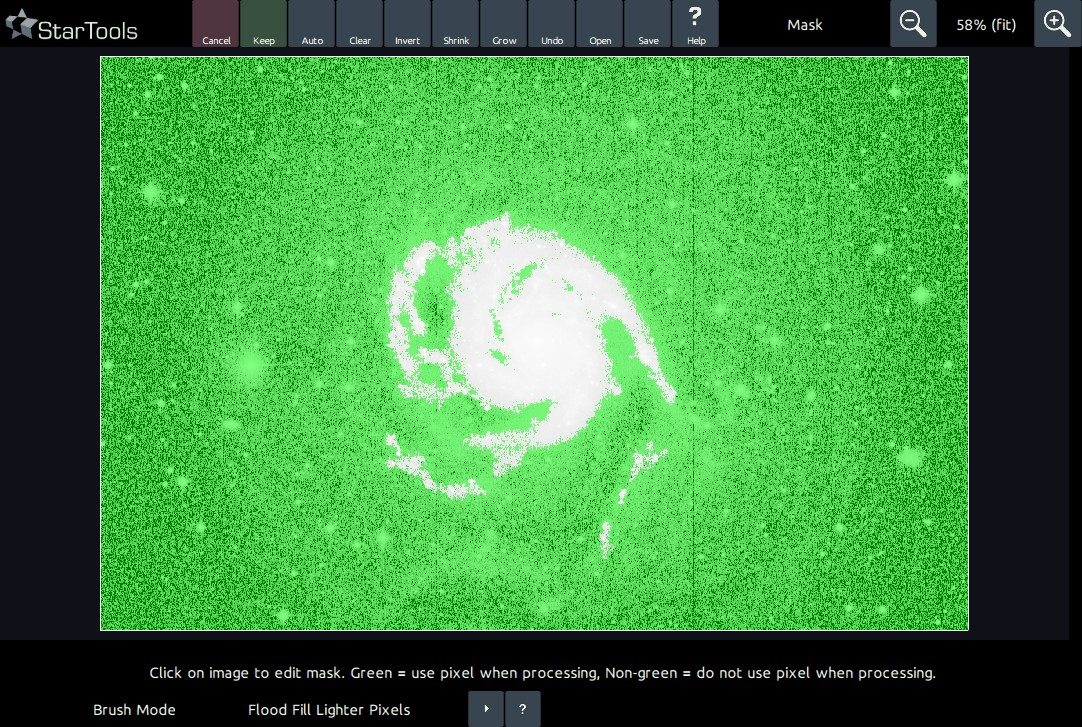- Usage
- Sample revocation
Sample revocation

With the exception of the previously mentioned larger "dark anomalies" (such as dust donuts or clumps of dead pixels), it is typically unnecessary to provide Wipe with a mask. However if you wish to give Wipe specific guidance, with respect to which areas of the image to include in the model of the background, then you may do so with a mask that describes where background definitely does not exist.
This is a subtle but important distinction from background extraction routines in less sophisticated software, where the user must "guess" where background definitely exists. The former is easy to determine and is readily visible, whereas the latter is usually impossible to see, precisely because the background is mired in gradients. In other words, StarTools' Wipe module works by sample revocation ("definitely nothing to see here"), rather than by the less optimal (and possibly destructive!) sample setting ("there is background here").
Analogous to how sample setting routines yield poor results by accidentally including areas of faint nebulosity, the opposite is the case in Wipe; accidentally masking out real background will yield the poorer results in Wipe. Therefore, try to be conservative with what is being masked out. If in doubt, leave an area masked in for Wipe to analyse.
You may also be interested in...
- Recommended ASTAP settings (under Starting with a good dataset)
Once turned off, you will be able to import your ASTAP-exported dataset into StarTools with the second option.
- Step 2: Inspect your dataset (under Quick Start)
At this point, things to look out for are; Stacking artefacts close to the borders of the image.
- Usage (under Color)
The Color module is very powerful - offering capabilities surpassing most other software - yet it is simple to use.
- Introduction (under Features & Documentation)
You are forgiven if, at first glance, you get the impression StarTools offers only the basics.
- The Auto Feature (under Usage)
Please note that other parameters such as the 'Threshold', 'Max feature size', 'Filter sensitivity' and 'Exclude color' have no effect in this mode.
